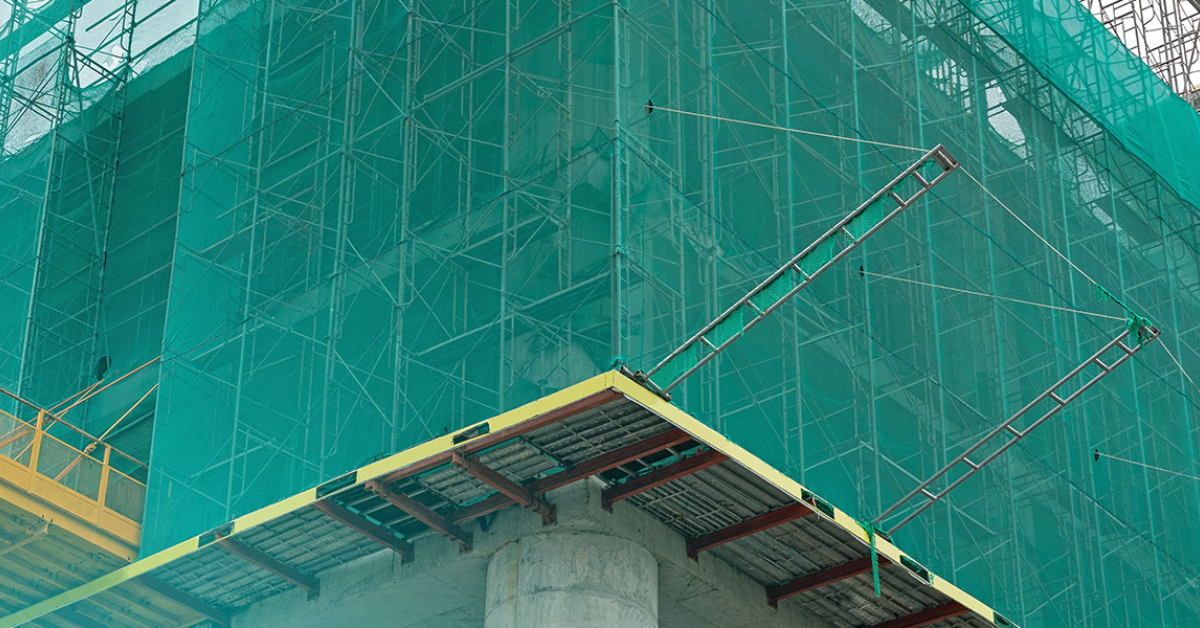Understanding Scaffold Netting: Safety, Versatility, and Essential Usage in Construction
In the dynamic and often hazardous world of construction, safety and efficiency are paramount. One critical element that contributes significantly to both is Scaffold Netting Whether it’s a towering skyscraper or a modest commercial building, this essential material plays a crucial role in protecting both workers and the public from falling debris, dust, and other on-site hazards. As construction projects continue to rise in scale and complexity, scaffold netting has become an indispensable solution in modern building practices.
What Is Scaffold Netting?
Scaffold netting is a durable, mesh-like fabric designed specifically for use on scaffolding structures at construction and renovation sites. It is typically made from high-density polyethylene (HDPE) or other robust synthetic materials that can withstand strong winds, heavy rain, and prolonged sun exposure. The netting is installed along the scaffolding to create a barrier that helps contain construction debris, tools, or even accidental falls. This not only ensures the safety of construction workers but also protects pedestrians and nearby properties.
The material is breathable yet strong, allowing air to flow through while keeping hazardous elements inside. This makes it particularly useful in urban construction environments where maintaining a clean and safe perimeter is critical.
Key Benefits of Scaffold Netting
1. Enhanced Safety
The primary function of scaffold netting is to promote a safer work environment. It reduces the risk of injuries by catching falling objects that might otherwise strike workers or pedestrians below. Additionally, it helps to prevent accidental falls from scaffolding platforms, acting as a protective shield around the work zone. This level of protection is not only critical for human safety but also helps companies avoid costly legal liabilities.
2. Dust and Debris Containment
Construction activities, especially demolition and renovation, often release large amounts of dust and small debris. Without a barrier, this dust can spread to surrounding areas, affecting air quality and causing inconvenience or even health risks for nearby residents. Scaffold netting acts as a containment tool, significantly reducing airborne particles from leaving the site and ensuring compliance with environmental regulations.
3. Improved Project Efficiency
By securing tools and materials within the working area, scaffold netting reduces the chances of project delays caused by lost equipment or clean-up tasks. It keeps the site organized and minimizes disruptions, contributing to a smoother, more efficient construction process.
4. Weather Resistance
Many scaffold netting materials are UV-treated and weather-resistant, making them suitable for long-term outdoor use. They are designed to withstand high winds and rain without tearing or deteriorating. This resilience ensures that the safety barrier remains intact for the duration of the project, regardless of weather conditions.
Applications in Modern Construction
Scaffold netting is used in a variety of construction scenarios, from new building developments to renovations and restorations. Its flexibility and adaptability make it suitable for:
-
High-rise building construction
-
Bridge and infrastructure projects
-
Industrial facility maintenance
-
Event setups where temporary structures are used
In each of these settings, scaffold netting ensures safety while helping to maintain an orderly and compliant work site. Its ability to be customized in size, color, and mesh density also makes it a preferred choice for contractors who want to combine functionality with brand visibility or aesthetic considerations.
Choosing the Right Scaffold Netting
When selecting scaffold netting for a project, several factors should be considered:
-
Material Strength: Ensure the netting is made from high-density materials like HDPE that provide excellent tear resistance.
-
UV Resistance: For projects lasting more than a few weeks, UV-treated netting ensures durability under sunlight.
-
Mesh Size: The mesh size should be appropriate for the type of work being performed. Smaller mesh is better for dust control, while larger mesh can be used where visibility is a priority.
-
Flame Retardant Options: In environments where fire risk is present, flame-retardant scaffold netting offers additional safety.
Quality scaffold netting is typically tested to meet industry standards and comes with certifications verifying its performance. Contractors should source their materials from reputable suppliers that prioritize safety and compliance.
Environmental and Legal Considerations
With growing emphasis on environmental responsibility, scaffold netting also serves an eco-conscious role. By reducing dust emissions and containing construction waste, it helps companies align with local environmental laws and reduce their ecological footprint.
Moreover, in many jurisdictions, the use of scaffold netting is mandated by safety regulations. Non-compliance can result in hefty fines, shutdowns, or project delays. Thus, investing in high-quality netting is not just a matter of safety, but also of legal necessity.
Maintenance and Installation Tips
Proper installation of scaffold netting is crucial to ensure its effectiveness. It should be tightly secured to the scaffold structure using cable ties or specially designed hooks. Loose or sagging netting can compromise its protective capabilities and create a hazard in itself.
Regular inspections should also be conducted to check for wear and tear, particularly in high-stress areas. Any damaged sections should be replaced immediately to maintain optimal protection. At the end of the project, scaffold netting can often be cleaned and stored for future use, making it a cost-effective long-term investment.
Scaffold Netting in Urban Development
In cities with dense populations and ongoing urban expansion, scaffold netting plays an even more vital role. It helps construction companies maintain good public relations by reducing noise and visual pollution, all while safeguarding passersby from the inherent risks of construction activities. This has made scaffold netting a must-have in municipal building codes and a standard feature in urban planning projects.
Whether it’s for a towering office complex or a residential renovation, the implementation of scaffold netting reflects a commitment to both safety and professionalism.
Conclusion
Scaffold netting is far more than just a protective covering—it’s a crucial element of any responsible construction operation. From safeguarding workers and the public to ensuring regulatory compliance and environmental sustainability, it delivers a wide range of benefits that make it indispensable on the modern job site.
For construction companies looking to enhance their site safety and operational efficiency, investing in high-quality Scaffold Netting is a smart and strategic move. As the industry continues to grow and evolve, so too will the demand for reliable safety solutions—and scaffold netting will remain at the forefront of that evolution.







